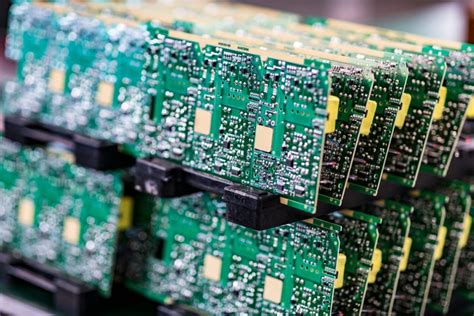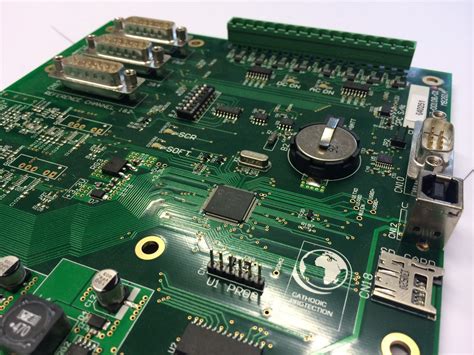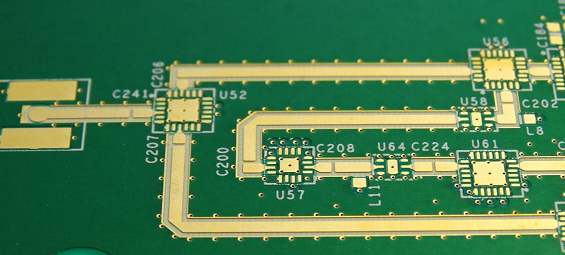How thermal pad works
Understanding The Science Behind Thermal Pads
Thermal pads are essential components in the realm of electronics, playing a crucial role in maintaining the optimal performance and longevity of various devices. To understand how thermal pads work, it is important to delve into the science behind their functionality. At the core, thermal pads are designed to facilitate efficient heat transfer between electronic components and their heat sinks. This process is vital because electronic devices generate heat during operation, and excessive heat can lead to reduced performance or even damage.
The fundamental principle behind thermal pads is their ability to conduct heat away from sensitive components.
Typically made from materials with high thermal conductivity, such as silicone or graphite, these pads serve as an intermediary layer that bridges the gap between the heat-generating component and the heat sink. The effectiveness of a thermal pad is largely determined by its thermal conductivity, which is a measure of how well it can transfer heat. Materials with higher thermal conductivity are more efficient at conducting heat, thus enhancing the overall cooling process.
In addition to their thermal conductivity, the physical properties of thermal pads also contribute to their functionality.
These pads are often designed to be soft and conformable, allowing them to fill in any microscopic air gaps that may exist between the surfaces of the component and the heat sink. Air is a poor conductor of heat, and any trapped air pockets can significantly impede heat transfer. By conforming to the surfaces, thermal pads ensure a more complete contact, thereby minimizing thermal resistance and improving heat dissipation.
Moreover, the thickness of a thermal pad can influence its performance.
While thicker pads may provide better gap-filling capabilities, they can also introduce additional thermal resistance. Therefore, selecting the appropriate thickness is crucial to achieving the desired balance between gap-filling and thermal conductivity. Manufacturers often provide specifications for their thermal pads, including thermal conductivity values and recommended thicknesses, to guide users in making informed decisions.
Another aspect to consider is the operating temperature range of thermal pads.
These pads must be able to withstand the temperatures generated by electronic components without degrading or losing their effectiveness. High-quality thermal pads are engineered to maintain their properties over a wide temperature range, ensuring consistent performance even under demanding conditions.
Furthermore, the installation process of thermal pads is relatively straightforward, which adds to their appeal.
They are typically self-adhesive, allowing for easy application without the need for additional tools or materials. This simplicity not only saves time but also reduces the risk of errors during installation, which could otherwise compromise the thermal management system.
In conclusion, thermal pads are indispensable in the field of electronics, providing an efficient means of heat transfer that is critical for the reliable operation of devices.
By understanding the science behind their design and functionality, one can appreciate the importance of selecting the right thermal pad for a given application. Factors such as thermal conductivity, thickness, and operating temperature range all play a role in determining the effectiveness of a thermal pad. As technology continues to advance, the demand for efficient thermal management solutions will only grow, underscoring the significance of thermal pads in the ever-evolving landscape of electronics.

The Role Of Thermal Pads In Heat Dissipation
Thermal pads play a crucial role in the realm of electronics, particularly in the efficient dissipation of heat. As electronic devices become increasingly compact and powerful, managing the heat they generate is paramount to ensuring their longevity and performance. Thermal pads serve as an essential component in this process, acting as a bridge between heat-generating components and heat sinks or other cooling solutions. To understand how thermal pads work, it is important to first consider the nature of heat transfer and the challenges posed by electronic devices.
Heat dissipation in electronics is primarily achieved through conduction, where heat moves from a hotter object to a cooler one.
However, the surfaces of electronic components and heat sinks are not perfectly smooth, often containing microscopic imperfections and air gaps. These gaps can significantly impede the efficient transfer of heat, as air is a poor conductor. This is where thermal pads come into play. Made from materials with high thermal conductivity, such as silicone or graphite, thermal pads are designed to fill these gaps, thereby enhancing the thermal interface between components.
The effectiveness of a thermal pad is largely determined by its thermal conductivity, which is a measure of its ability to conduct heat.
Higher thermal conductivity means that the pad can transfer heat more efficiently from the component to the heat sink. Additionally, the compressibility of the pad is also a critical factor. A good thermal pad must be able to conform to the surfaces it is placed between, ensuring maximum contact area and minimizing thermal resistance. This adaptability allows thermal pads to accommodate variations in surface flatness and roughness, further optimizing heat transfer.
Moreover, thermal pads offer several advantages over other thermal interface materials, such as thermal pastes.
One significant benefit is their ease of application. Unlike pastes, which require careful application to avoid air bubbles and uneven distribution, thermal pads can be simply placed onto the component, providing a clean and consistent interface. This simplicity not only reduces the risk of application errors but also makes thermal pads a preferred choice in mass production environments where speed and consistency are critical.
In addition to their practical benefits, thermal pads also contribute to the overall reliability of electronic devices.
By effectively managing heat, they help prevent overheating, which can lead to component failure and reduced lifespan. This is particularly important in high-performance applications, such as gaming computers and data centers, where components are often pushed to their limits.
By maintaining optimal operating temperatures, thermal pads ensure that these devices can perform at their best without compromising on reliability.
Furthermore, as electronic devices continue to evolve, the demand for more efficient thermal management solutions is expected to grow. Innovations in thermal pad materials and designs are likely to play a significant role in meeting this demand. For instance, advancements in nanotechnology may lead to the development of thermal pads with even higher thermal conductivity and improved mechanical properties. Such innovations could further enhance the performance and reliability of electronic devices, underscoring the importance of thermal pads in modern technology.
In conclusion, thermal pads are indispensable in the field of electronics, providing an effective solution for heat dissipation. By bridging the gap between heat-generating components and cooling solutions, they ensure efficient heat transfer, contributing to the performance and longevity of electronic devices. As technology continues to advance, the role of thermal pads in heat management is set to become even more critical, highlighting their significance in the ever-evolving landscape of electronics.

Comparing Thermal Pads And Thermal Paste: Which Is Better?
In the realm of computer hardware and electronics, effective thermal management is crucial to ensure optimal performance and longevity of components. Two common solutions for managing heat dissipation are thermal pads and thermal paste. Understanding how thermal pads work and comparing them to thermal paste can help in determining which is better suited for specific applications.
Thermal pads are solid, pre-formed sheets made from a variety of materials, including silicone, graphite, or other thermally conductive compounds
These pads are designed to fill the microscopic gaps between a heat-generating component, such as a CPU or GPU, and a heat sink. By doing so, they facilitate the efficient transfer of heat away from the component, preventing overheating and maintaining performance stability. The primary advantage of thermal pads lies in their ease of use. Unlike thermal paste, which requires careful application to avoid air bubbles and uneven distribution, thermal pads can be simply placed onto the component, ensuring consistent coverage and reducing the risk of user error.
Moreover, thermal pads offer a clean and reusable solution.
They do not dry out or degrade over time as thermal paste can, making them ideal for situations where components may need to be frequently disassembled and reassembled. This characteristic is particularly beneficial in environments where maintenance and upgrades are common, such as in data centers or during hardware testing. Additionally, thermal pads provide electrical insulation, which can be an important consideration in certain applications where electrical conductivity poses a risk.
On the other hand, thermal paste, also known as thermal compound or thermal grease, is a viscous substance that is applied between the heat-generating component and the heat sink.
It is composed of a polymerizable liquid matrix and thermally conductive fillers, such as metal oxides or ceramic particles. The primary advantage of thermal paste is its superior thermal conductivity compared to most thermal pads. This property allows for more efficient heat transfer, which can be critical in high-performance computing environments where every degree of temperature reduction can significantly impact performance and stability.
However, the application of thermal paste requires precision and care.
An uneven application can lead to air pockets, which act as insulators and impede heat transfer. Furthermore, over time, thermal paste can dry out and lose its effectiveness, necessitating periodic reapplication. This maintenance requirement can be a drawback in situations where accessibility to components is limited or where downtime must be minimized.
In comparing thermal pads and thermal paste, the choice largely depends on the specific requirements of the application.
For users seeking a straightforward, low-maintenance solution with the added benefit of electrical insulation, thermal pads may be the preferred option. Conversely, for those prioritizing maximum thermal conductivity and willing to invest time in careful application and maintenance, thermal paste may offer the superior performance needed.
Ultimately, both thermal pads and thermal paste have their respective advantages and limitations. By understanding how thermal pads work and considering the specific needs of the application, users can make an informed decision that balances ease of use, performance, and maintenance requirements. As technology continues to advance, the development of new materials and formulations may further enhance the effectiveness of these thermal management solutions, providing even greater flexibility and efficiency in managing heat dissipation in electronic devices.

How To Choose The Right Thermal Pad For Your Device
When selecting the appropriate thermal pad for your device, it is crucial to understand the fundamental role these components play in maintaining optimal device performance. Thermal pads are essential in managing heat dissipation, ensuring that electronic components do not overheat and thereby prolonging the lifespan of the device.
As electronic devices become more powerful and compact, the need for efficient thermal management solutions has never been more critical.
Therefore, choosing the right thermal pad involves considering several key factors that align with your device’s specific requirements.
To begin with, it is important to consider the thermal conductivity of the pad.
Thermal conductivity is a measure of a material’s ability to conduct heat. In the context of thermal pads, higher thermal conductivity means more efficient heat transfer from the device’s components to the heat sink or chassis. This is particularly important for high-performance devices that generate significant amounts of heat, such as gaming consoles, high-end laptops, and servers. When evaluating thermal pads, look for those with a thermal conductivity rating that matches or exceeds the demands of your device.
In addition to thermal conductivity, the thickness of the thermal pad is another critical factor.
The thickness must be sufficient to fill the gap between the heat-generating component and the heat sink, ensuring full contact and efficient heat transfer. However, it should not be so thick that it impedes the assembly of the device or causes undue pressure on the components. It is advisable to measure the gap accurately and select a thermal pad that fits snugly without compressing too much, as excessive compression can reduce the pad’s effectiveness.
Moreover, the material composition of the thermal pad can significantly influence its performance.
Common materials used in thermal pads include silicone, graphite, and phase change materials. Silicone-based pads are popular due to their flexibility and ease of use, making them suitable for a wide range of applications. Graphite pads, on the other hand, offer higher thermal conductivity and are ideal for applications where superior heat dissipation is required. Phase change materials provide a unique advantage by changing state at certain temperatures, thereby enhancing heat transfer during peak performance periods. Understanding the material properties and their suitability for your specific application is essential in making an informed choice.
Furthermore, consider the operating temperature range of the thermal pad.
Devices that operate in extreme temperature conditions require pads that can withstand such environments without degrading. Ensure that the thermal pad you choose can maintain its integrity and performance within the temperature range your device is likely to encounter.
Lastly, it is worth considering the ease of installation and reusability of the thermal pad.
Some pads come with adhesive backing, simplifying the installation process, while others may require additional securing methods. Reusable pads can be advantageous for devices that require frequent maintenance or upgrades, as they can be removed and reapplied without losing effectiveness.
In conclusion, selecting the right thermal pad for your device involves a careful assessment of thermal conductivity, thickness, material composition, operating temperature range, and ease of installation. By taking these factors into account, you can ensure that your device remains cool and operates efficiently, ultimately enhancing its performance and longevity.







